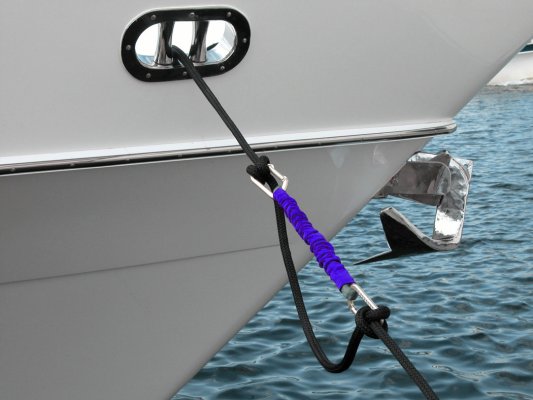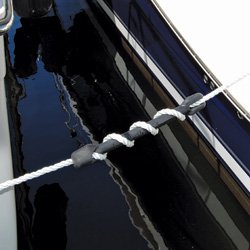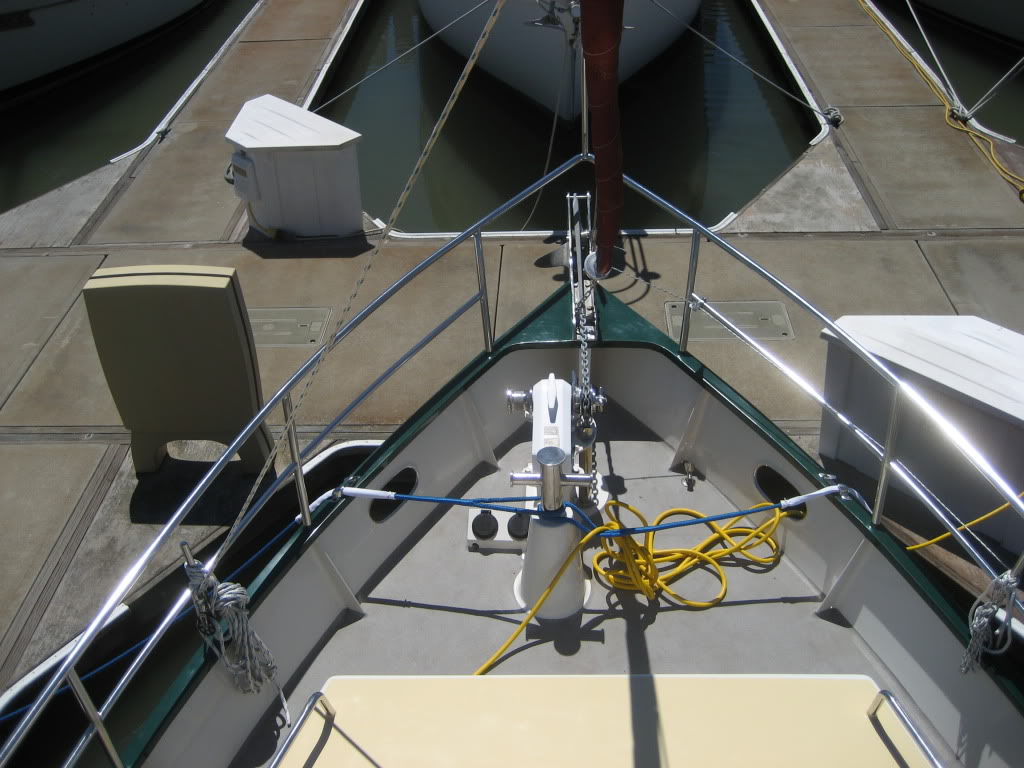I would like to see some opinions on dock line tension.
I tend to snug all my lines up until my fenders are touching on both sides for times I am at the boat an back them off a touch when I leave just to save the gelcoat keeping the same amount of sag on all the lines. I cinch them down pretty tight on pending storms forecasting steady strong wind and double up on the bow and stern.
Just wondering what is the school of thought is from some of you old salts. Also what type rope do you perfer braid or strand.
Davy
My boat is at a floating slip in an area with reversing tidal currents. You have to restrain it from moving back and forth. Spring line, stern line, etc.
I have my lines fairly snug, but loose enough that they can be removed from the boat without removing them from the dock cleats. The lines stay at the slip, I have others for travelling.
I use three strand nylon at my home slip and braided nylon when travelling.





 I'm just saying, maybe I should probably buy some stainless steal rope and tractor tires for keeping my baby safe in her slip!!
I'm just saying, maybe I should probably buy some stainless steal rope and tractor tires for keeping my baby safe in her slip!! 